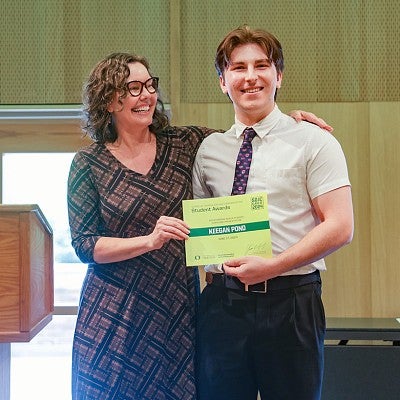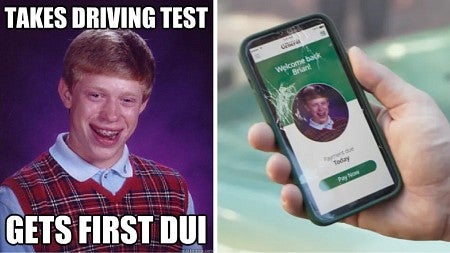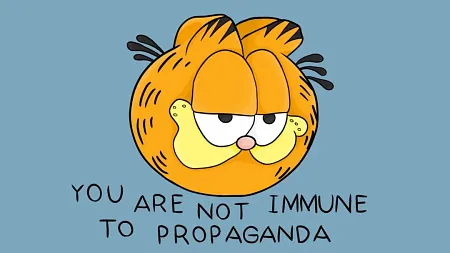SOJC media studies major dives deep into internet meme culture, earning him the Outstanding Media Studies Capstone Presentation award.

By Marcus Wilkins
Perhaps it’s the flame-engulfed dog’s resigned grin, Kermit the Frog’s disengaged tea-sip or Willy Wonka’s charming (condescending?) lean, but chances are one of these popular internet memes has captured your attention at some point.
That was certainly the case for Keegan Pond, a media studies major at the UO School of Journalism and Communication (SOJC). Pond has a particular aversion to slick marketing strategies, so he notices the ones that are especially “cringe.”
“Hulu ran an advertisement that featured Bad Luck Brian, but it had been 10 years since the meme was popular,” said Pond of the gawky character in a plaid sweater used to convey misfortune. “And since internet culture moves so fast, I was almost offended by how outdated the reference was. What marketing team thought that this was going to connect?”
Thus began Pond’s research topic for his media studies capstone class. The Eugene native dove into media uses of inexpensive images and personalities to hawk products as varied as soft drinks, auto insurance, electronics and cheeseburgers. The result was his project “Memes to an End: Investigating the Commodification of User-Generated Content,” which was awarded Outstanding Media Studies Capstone Presentation in June.

One of Pond’s sources, biologist Richard Dawkins, defines memes as “units of culture” that spread from person to person — analogous to viruses. Memes are also crowd-sourced, disposable and readily available, making them prone to exploitation, according to Pond.
For example, Wendy’s entered the fray by engaging with social-media commentators who were critical of the fast-food giant. The clap-backs led to clicks and viral user-generated content, which inspired other brands to pursue similar campaigns.
“Everyone wanted some of that sweet, sweet degradation clout,” joked Pond in his presentation. “I would argue that this art people did — for free and uncompensated, mind you — gave Wendy’s a mean sex appeal that added to the myth and let them lean into the strategy more and more.”
Pond credits his classmates and professors for supercharging his academic confidence. As the smallest cohort in the SOJC, the media studies students took a detailed interest in each other’s projects — constantly bouncing ideas around and providing constructive criticism.

“I really value that human connection,” Pond said. “The faculty here always make time to give you and your work the attention that it needs. If I was in a larger program, I don't know if I could rely on that kind of availability from my professors.”
It’s also not lost on Pond that, as a Duck, his very surname has a meme-ish quality.
“When I first applied to UO, I would receive mail that said ‘Welcome to the Pond,” Pond said. “It definitely catches your eye when your last name is on the envelope.”
Marcus Wilkins is a journalist and marketing writer with 20 years of experience in newspapers, magazines, digital copywriting and higher education communication. A University of Missouri alum, he most enjoys telling stories about people whose work changes lives and enriches communities.
